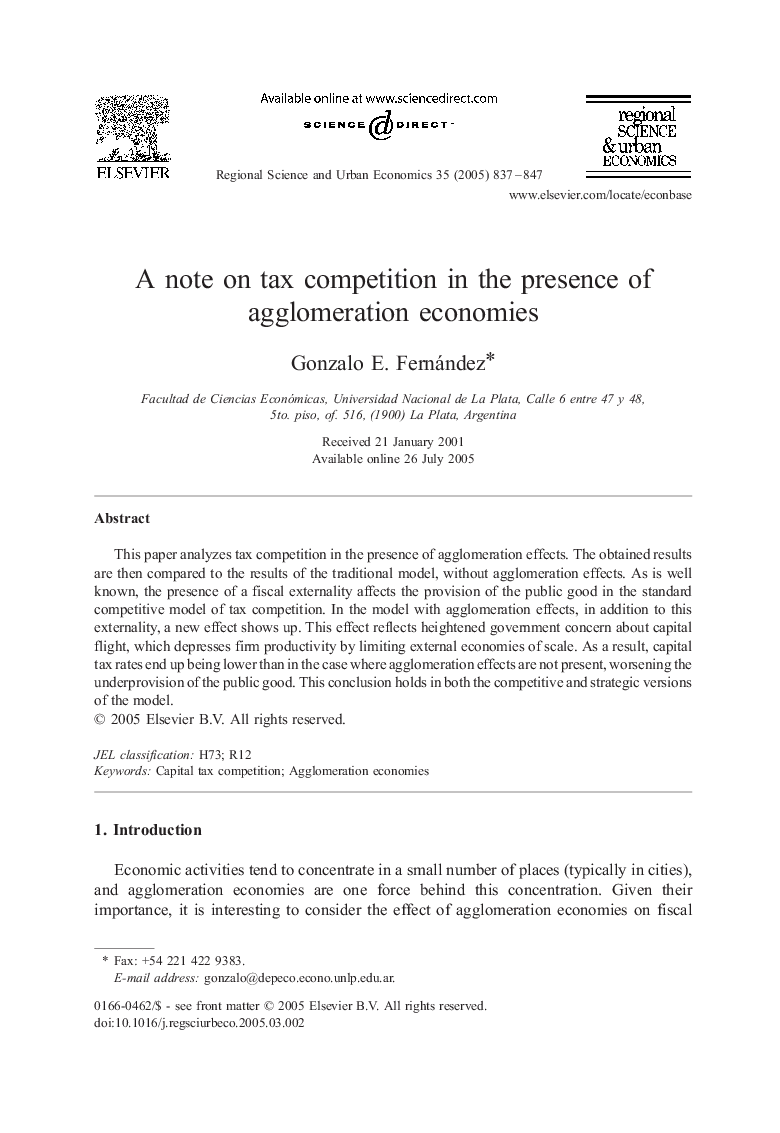| Article ID | Journal | Published Year | Pages | File Type |
|---|---|---|---|---|
| 10482467 | Regional Science and Urban Economics | 2005 | 11 Pages |
Abstract
This paper analyzes tax competition in the presence of agglomeration effects. The obtained results are then compared to the results of the traditional model, without agglomeration effects. As is well known, the presence of a fiscal externality affects the provision of the public good in the standard competitive model of tax competition. In the model with agglomeration effects, in addition to this externality, a new effect shows up. This effect reflects heightened government concern about capital flight, which depresses firm productivity by limiting external economies of scale. As a result, capital tax rates end up being lower than in the case where agglomeration effects are not present, worsening the underprovision of the public good. This conclusion holds in both the competitive and strategic versions of the model.
Related Topics
Social Sciences and Humanities
Economics, Econometrics and Finance
Economics and Econometrics
Authors
Gonzalo E. Fernández,
